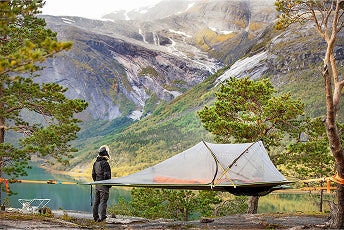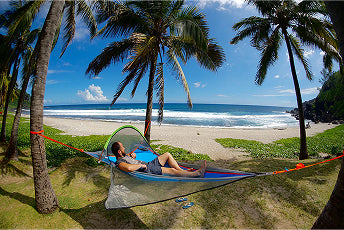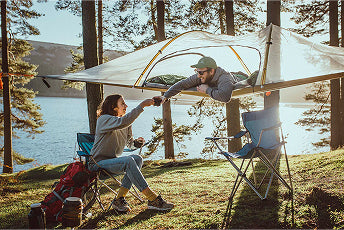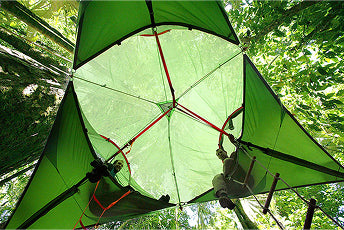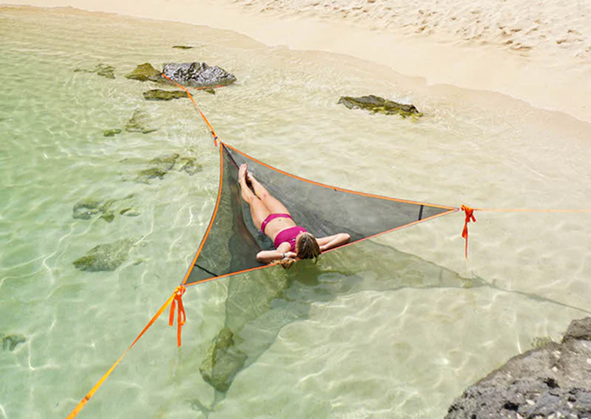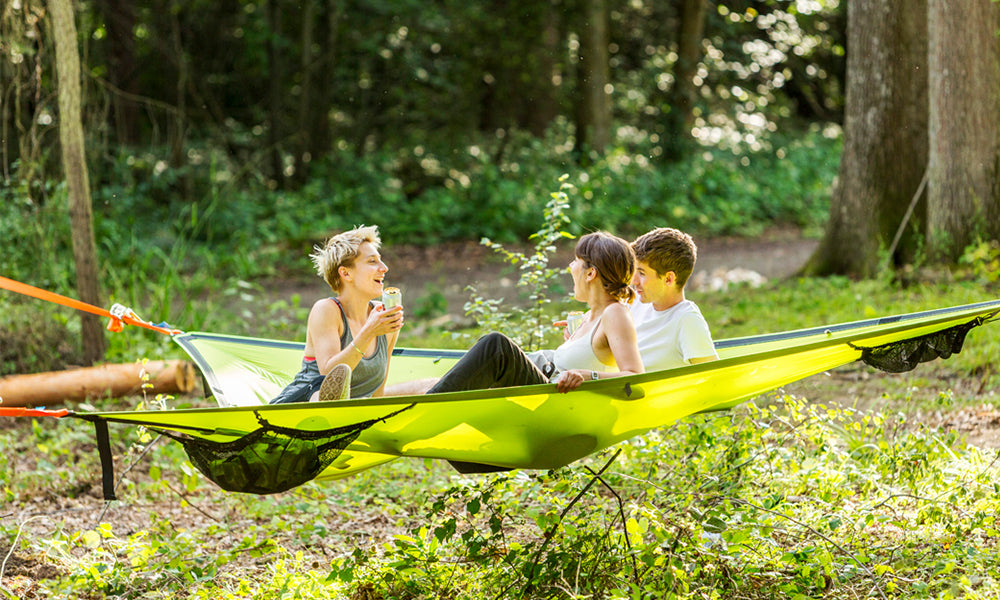There are certain things you need to consider when heading outdoors with your hammock, whether that be a traditional hammock or a Tentsile one). Although your hammock will likely come with simple set-up instructions, here you’ll find some tips on how to get the perfect hammock hang out.
Hammock camping is one the most eco-friendly, low impact ways to camp as it requires no ground clearing or staking of pegs into the ground, and when used with our No Trace Kits, a tree-friendly hanging system.
Here are three simple steps to follow if you want to hang your hammock like a pro:
1. Find the right location to hang your hammock

Start by researching campgrounds or checking with land managers/ national parks, that hammock camping is allowed. Some locations may have endangered trees, trees that aren’t strong enough to support hammock camping, or they may just prohibit hammock camping due to general misuse – bear this in mind – always hang your hammock responsibly
Follow the Leave No Trace principles. For example, set up your hammock at least 200 feet away from a water source - shoreline and riparian habitats are fragile and often damaged by human traffic. Look for an established site instead where there is no vegetation to be trampled and damaged
Avoid hanging your hammock where it can be an obstacle for people and animals. For example, check where pathways are and be aware of your surroundings. Also check for hazards like insect nests or poisonous plants.
2. Pick the right trees for your hammock set-up

Find trees that are strong and sturdy and the right distance apart. Before heading out with your hammock, be aware of the length of it (not all hammocks are born equal) so you know the ideal distance apart your trees need to be.
Don’t forget to check the health of the trees before hanging your hammock. Make sure the ground around the base of the tree isn’t soft as this can indicate shallow tree roots. Also check for rotten wood. You want to ensure your trees are strong and healthy. Your hammock instructions should tell you the ideal tree diameter you require.
We recommend using tree protector straps to help protect the trees you are using to hang your hammock. Straps or rope can damage the bark of some species of trees so using a protective layer under your rigging system will protect against bark abrasions. The wider the straps your hammock is hung from the better as this helps distribute the load over a greater area.
3. Hanging your hammock

We recommend reading your hammock instruction manual before venturing out and even doing a test set-up so you are familiar and feel confident hanging your hammock once in your chosen location. Practice makes perfect, and the more confident you’ll be at hanging your hammock.
When rigging up a traditional hammock aim for a 30-degree angle between the strap and the ground to give you the optimal level of sag for a comfortable laying position. With a traditional hammock, the tauter you pull it, the more tension you will create to the sides of the hammock making movement once you’re in quite constricting. If you have a Tentsile T-mini hammock or Trillium hammock, then tension is key in creating the signature flat base which means it’s suitable for back, side or front sleepers!
Don’t hang your hammock too high off the ground – remember you need to be able to get in and out easily so go with a height that works for you!
Before jumping in, check your set-up and ensure the straps are attached correctly and any safety devices are correctly locked. Test the hammock with your weight and if it’s secure, you’re safe to get in!
Take a look at our range of Tree Tents and hammocks and get out and start exploring the great outdoors.
Happy camping!

